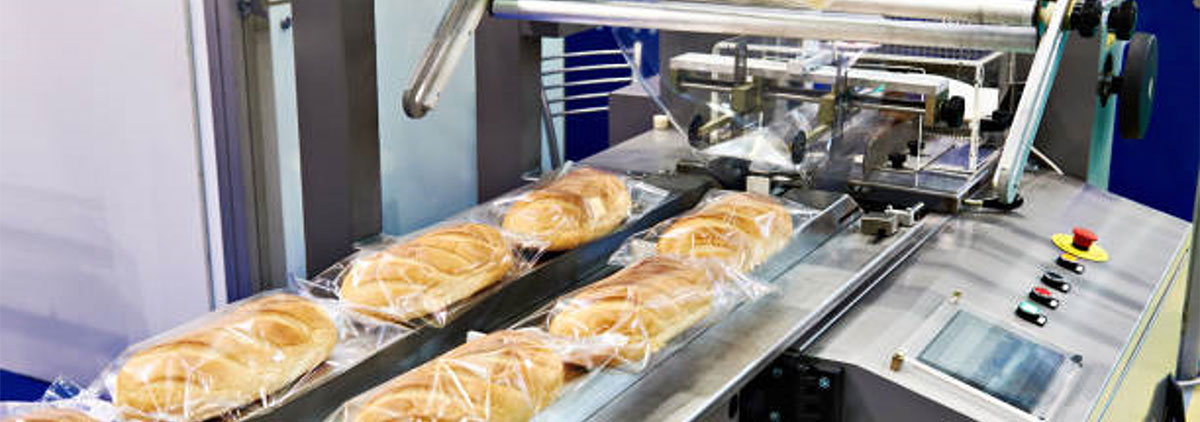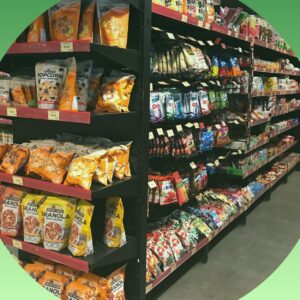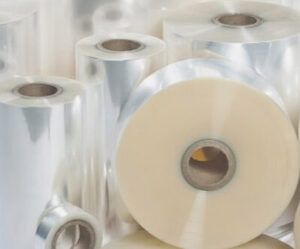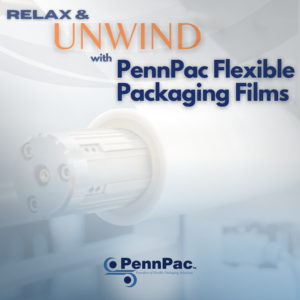
Key Takeaways
- Understand the composition and benefits of BOPP films in flexible packaging.
- Explore the key characteristics that make BOPP films versatile and cost-effective.
- Learn about the various applications of BOPP films across different industries.
- Discover the sustainable advantages and future trends of BOPP films.
Table of Contents
- Introduction
- What Are BOPP Films?
- BOPP Film Overview
- Properties and Advantages of BOPP Films
- Applications of BOPP Films in Flexible Packaging
- Benefits of Using Flexible BOPP Films
- Future Trends in BOPP Films
- Conclusion
- FAQ
Introduction
BOPP films, or Biaxially Oriented PolyPropylene films, are a cornerstone in the flexible packaging industry. Above all, renowned for their versatility and adaptability. BOPP films play a crucial role in modern packaging solutions, offering a range of benefits that make them indispensable across various sectors. In this blog post, we’ll explore the world of BOPP films, focusing on their composition, properties, and applications. You’ll learn about the significance of flexible BOPP films and how they can revolutionize your packaging solutions.
What Are BOPP Films?
Understanding BOPP Films
BOPP films are made from polypropylene, a type of plastic that is stretched in both the machine direction and transverse direction. This process is known as biaxial orientation and is crucial for enhancing the film’s characteristics. During this process, stretching improves the film’s strength, clarity, and barrier properties. As a result, BOPP films are an ideal material for various packaging applications.
Made from Polypropylene, BOPP films are cost-effective and widely available. Above all, appealing to manufacturers and consumers alike. BOPP films find extensive use in flexible packaging due to their favorable properties.
BOPP Film Overview
Key Characteristics of BOPP Films
BOPP films possess several characteristics that make them suitable for diverse packaging needs. These include:
- High Tensile Strength: The biaxial orientation enhances strength, allowing BOPP films to withstand mechanical stress during handling and transportation.
- Excellent Clarity and Gloss: These films offer visual clarity, making printed designs and product contents look appealing.
- Moisture Resistance: BOPP films provide an effective barrier to moisture, prolonging the freshness and shelf life of packaged products.
- Chemical Resistance: Their resistance to various chemicals makes them ideal for packaging items that require protection from external contaminants.
Manufacturing Process of BOPP Films
The manufacturing process of BOPP films involves stretching the polypropylene material in two directions. This orientation directly influences the mechanical properties and ensures exceptional film transparency.
Here’s a summary of the manufacturing process and characteristics:
| Characteristics | Description |
|---|---|
| Tensile Strength | High durability for transportation and handling |
| Transparency | Optically clear for aesthetic product presentation |
| Barrier Properties | Protects contents from moisture and chemicals |
| Resistance | Withstands environmental factors |
Properties and Advantages of BOPP Films
The Benefits of Biaxially Oriented Polypropylene
BOPP films possess various physical and chemical properties, providing many advantages for packaging:
- Strength and Durability: The biaxial orientation results in films that can endure physical stresses.
- Clarity and Gloss: The inherent clarity of BOPP films enhances visual appeal, which is vital in retail environments. This clarity allows brands to showcase their products and attract customers effectively.
- Barrier Properties: BOPP films serve as a formidable barrier against moisture and contaminants, vital for extending the shelf life of food and pharmaceutical products. The barrier properties are particularly beneficial, ensuring that sensitive items remain secure.
- Versatility: BOPP films can be used in an array of applications and possess the flexibility needed for various packaging formats. The materials can be easily customized, making them suitable for both small and large manufacturers.
Comparison with Other Materials
When compared to alternative packaging materials like PET, LDPE, and PVC, BOPP films offer distinct advantages:
- Cost-Effectiveness: BOPP films are generally more affordable, providing an efficient solution for manufacturers.
- Functionality: They outperform many other films in clarity, strength, and barrier properties while maintaining lightweight contrived packaging solutions.
- Sustainability: BOPP films are often preferred for their recyclability and lower environmental impact compared to materials like PVC (Learn more).
Applications of BOPP Films in Flexible Packaging
The Wide Scope of BOPP Films Usage
BOPP films are remarkably adaptable, finding applications in several sectors:
Food Packaging
- Snack wrappers
- Confectionery packaging
- Bakery product wraps
- Fresh produce bags
These applications leverage the films’ moisture and chemical resistance, enhancing product preservation. For more details on food packaging applications, visit Flexible Packaging Films for Food & Beverage.
Pharmaceutical and Medical Packaging
BOPP films are crucial for packaging medical supplies, emphasizing their barrier properties against contaminants. Their strength ensures the safe delivery of sensitive medications.
Personal Care and Cosmetic Packaging
Examples include:
- Overwrap for cosmetic boxes
- Labels for skincare products
- Sachets for single-use items
The clarity and gloss of BOPP films help enhance the presentation of these products.
Innovative Applications
Emerging uses for BOPP films focus on sustainable packaging solutions. With a growing emphasis on recyclability and biodegradability, companies are looking for eco-friendly options in their packaging strategy.
Benefits of Using Flexible BOPP Films
The Advantages of Flexible BOPP Films
Integrating flexible BOPP films into packaging processes offers numerous benefits:
- Sustainability: BOPP films can be recycled and show a trend towards developing biodegradable alternatives, aligning with eco-conscious initiatives.
- Cost-Effectiveness: Their high machinability ensures less downtime during production, which in turn increases operational efficiency.
- Presentation and Shelf Appeal: The clarity and gloss of flexible BOPP enhance product appearance, which can attract consumers and boost sales.
- Additional Benefits:
- Lightweight design for reduced shipping costs
- Ease of printing for customization
- Custom formats for varied product sizes
For more insights on sustainability in flexible packaging, visit Flexible Packaging: Transforming Trends.
Future Trends in BOPP Films
What Lies Ahead for BOPP Films?
The future of BOPP films looks promising with advancements in technology aimed at enhancing performance and sustainability. Some key points of focus include:
- Technological Advancements: Innovations in the manufacturing process of biaxially oriented polypropylene films are anticipated to improve sustainable practices.
- Sustainable Innovations: Expect developments in compostable BOPP films to meet the rising demand for eco-friendly packaging solutions.
- Evolving Consumer Preferences: As consumers increasingly choose products with sustainable packaging, flexible BOPP films are likely to adapt, driving innovation within the industry.
- Potential New Applications: There may be untapped markets or applications that leverage the strengths of BOPP films in emerging sectors.
- Market Projections: The BOPP films market is expected to grow, driven by the increasing demand for flexible packaging solutions as noted by leading market research studies.
Conclusion
In conclusion, BOPP films are a vital component of the flexible packaging industry. Their balance of strength, clarity, and sustainability makes them the perfect choice across multiple sectors, from food to pharmaceuticals. The versatility and adaptability of BOPP films ensure they meet modern packaging needs effectively. Businesses looking to enhance their packaging strategies should consider exploring and adopting BOPP films.
Contact PennPac today to learn more about our BOPP flexible packaging solutions.
FAQ
What are the main benefits of using BOPP films in packaging?
BOPP films offer high tensile strength, excellent clarity, moisture and chemical resistance, making them ideal for various packaging applications.
How sustainable are BOPP films?
BOPP films are recyclable and there is a trend towards developing biodegradable alternatives, aligning with eco-conscious initiatives.
In which industries are BOPP films most commonly used?
They are widely used in food, pharmaceutical, medical, personal care, and cosmetic packaging due to their versatile properties.
How do BOPP films compare to other packaging materials like PET and PVC?
BOPP films are generally more cost-effective, offer superior clarity and strength, and have a lower environmental impact compared to materials like PVC.
What are the future trends for BOPP films in the packaging industry?
The future of BOPP films includes advancements in sustainable practices, development of compostable films, and expanding applications driven by evolving consumer preferences.




